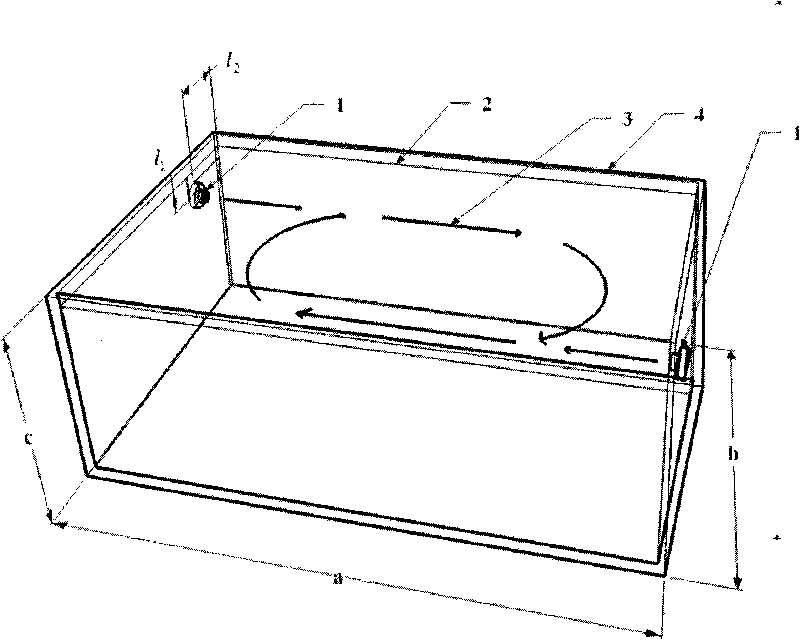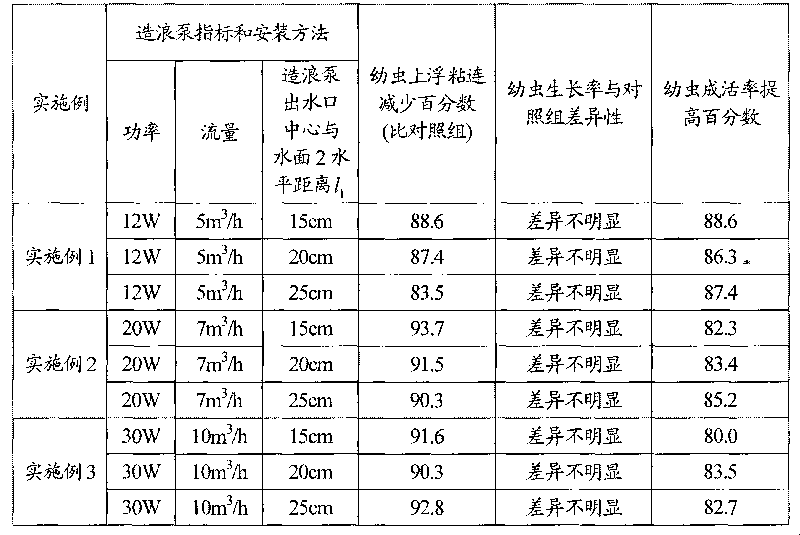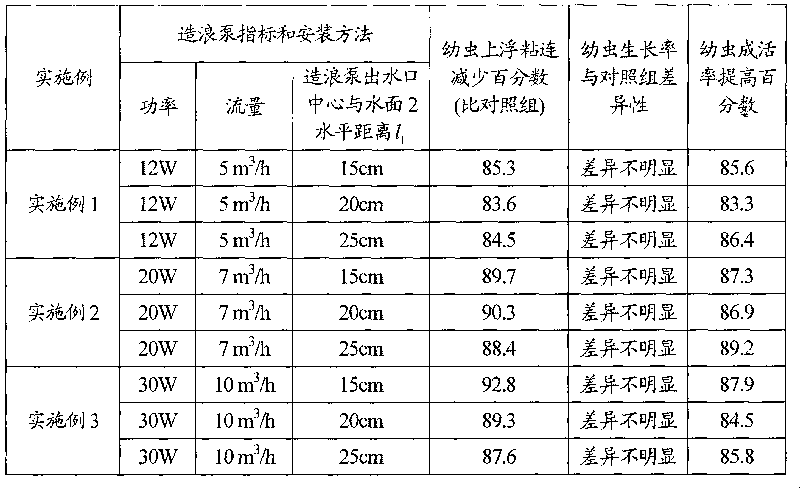Method for preventing pinna pectinata larvae from floating upwards and adhering
A technology for larvae and larvae, which is applied in the field of bivalve seed production in aquaculture, can solve the problems of low larvae cultivation efficiency and reduced cultivation density, reduce the probability of larvae floating and sticking, reduce floating sticking, The effect of improving the survival rate
- Summary
- Abstract
- Description
- Claims
- Application Information
AI Technical Summary
Problems solved by technology
Method used
Image
Examples
Embodiment
[0022] The present invention provides several typical embodiments taking the larvae of Pleurotus chinensis as an example, but the present invention is not limited to the following examples.
[0023] 1. The cultivation effect of the small-scale cultivation pond (table 1)
[0024] Table 1
[0025]
[0026] The conditions of the above examples are the suitable conditions for cultivating the larvae of P. chinensis, that is, water temperature: 18-28°C, salinity: 25-35‰, pH value: 7.0-8.5, and the bait for the single-cell algae is golden algae, diatoms or flat algae. algae.
[0027] Such as figure 1 As shown, the length (a)×width (b)×height (c) of the cultivation pond is 4.0m×3.0m×1.2m, the cultivation water depth is 1.0m, and the cultivation water body is 12.00m 3 , The density of larvae is 4-5 / ml. In this embodiment, two wave-making pumps 1 are installed on the wall in the width direction of each cultivation pool 4, distributed in a diagonal shape, and the distance between ...
PUM
 Login to View More
Login to View More Abstract
Description
Claims
Application Information
 Login to View More
Login to View More - R&D
- Intellectual Property
- Life Sciences
- Materials
- Tech Scout
- Unparalleled Data Quality
- Higher Quality Content
- 60% Fewer Hallucinations
Browse by: Latest US Patents, China's latest patents, Technical Efficacy Thesaurus, Application Domain, Technology Topic, Popular Technical Reports.
© 2025 PatSnap. All rights reserved.Legal|Privacy policy|Modern Slavery Act Transparency Statement|Sitemap|About US| Contact US: help@patsnap.com



